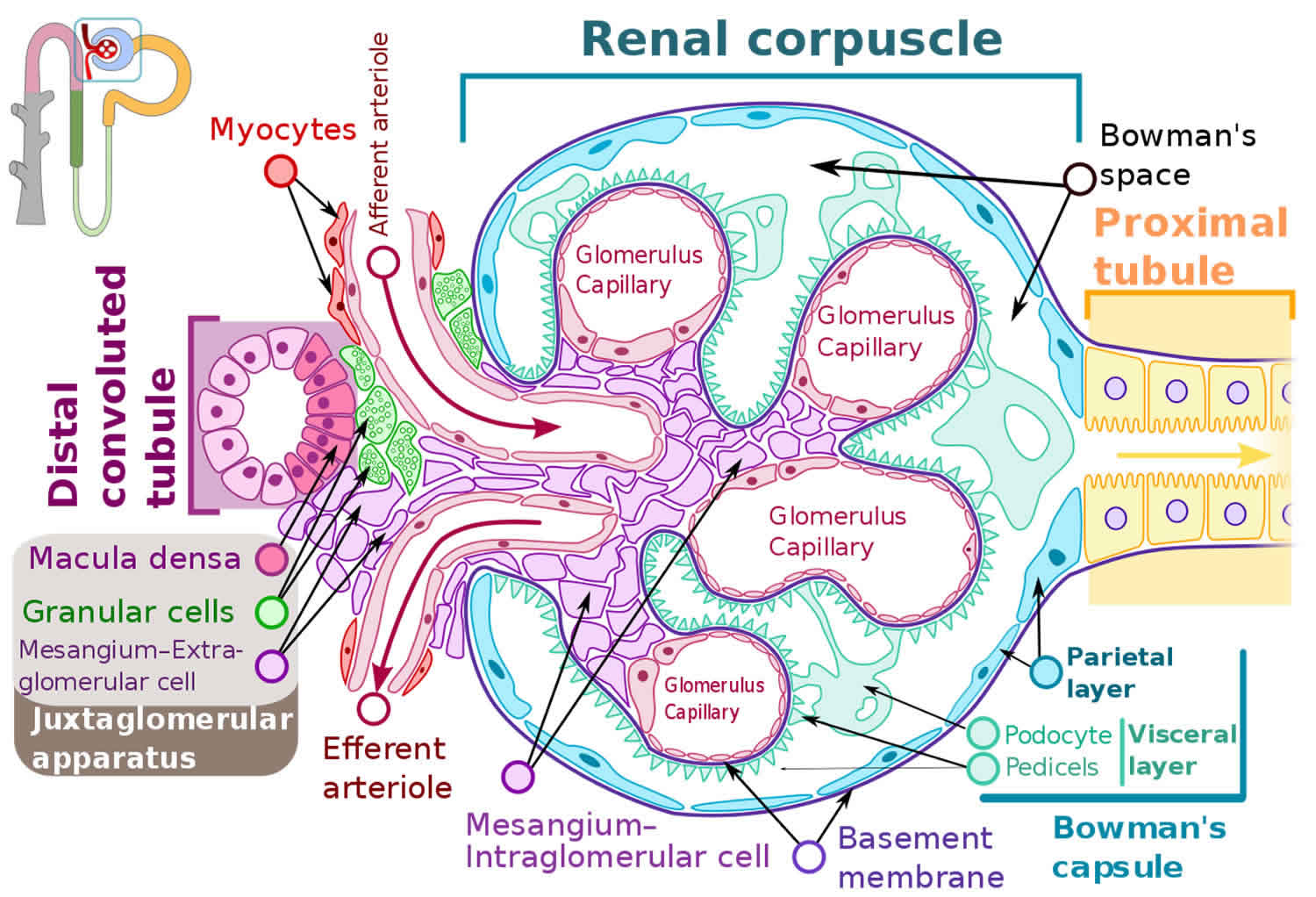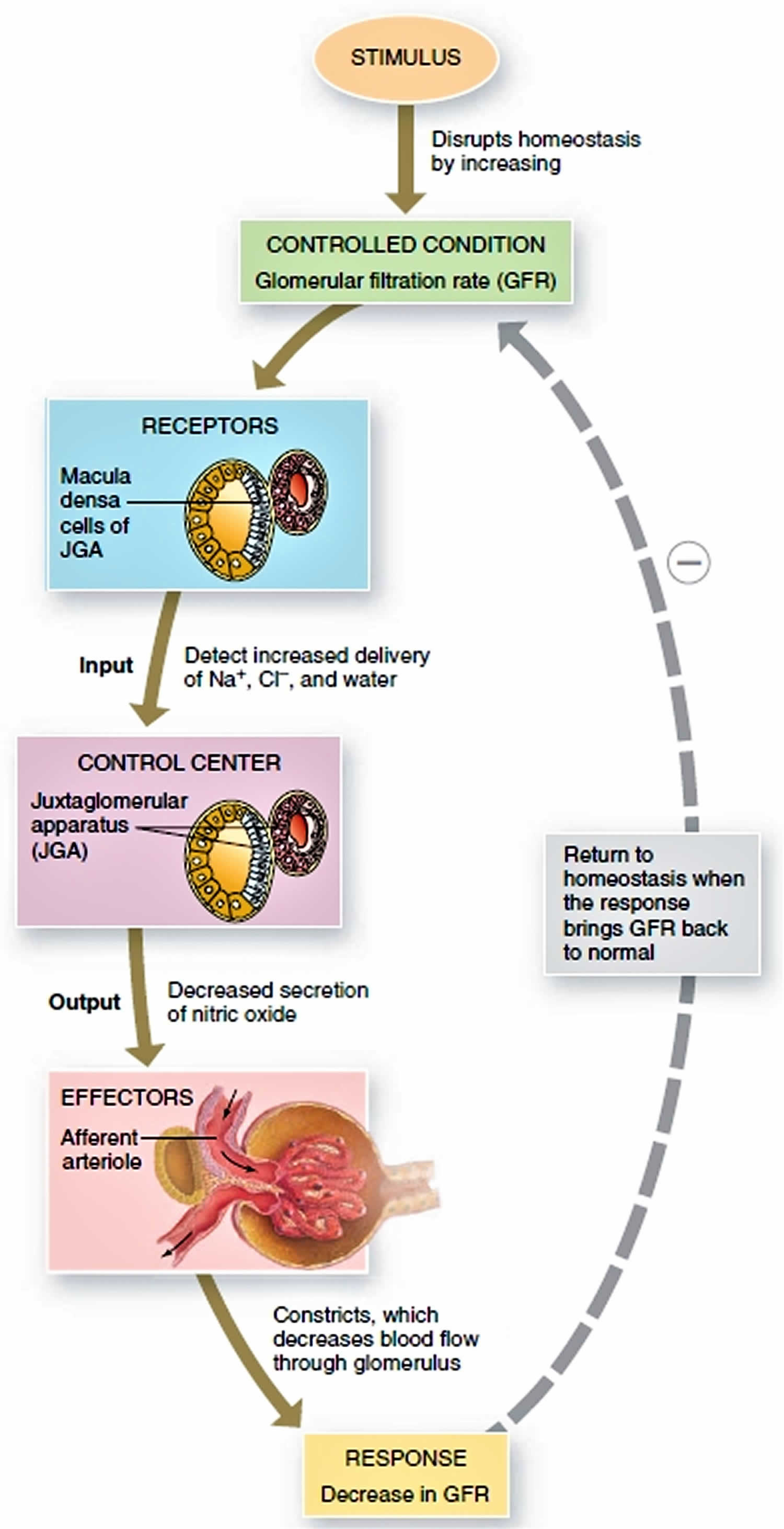What is the juxtaglomerular apparatus
The juxtaglomerular apparatus also known as the juxtaglomerular complex, is a structure in the kidney that regulates the function of each nephron, the functional units of the kidney. The juxtaglomerular apparatus is named because it is next to the glomerulus. The juxtaglomerular apparatus is part of the kidney nephron, next to the glomerulus. The juxtaglomerular apparatus is located between the afferent arteriole and the returning distal convoluted tubule of the same nephron. This location is critical to its function in regulating renal blood flow and glomerular filtration rate (GFR).
The juxtaglomerular apparatus consists of three types of cells:
- Juxtaglomerular cells of the afferent arteriole also known as granular cells that synthesize and store renin, which is secreted in response to specific stimuli (e.g., low blood flow, decreased NaCl delivery). The juxtaglomerular cells could be considered the “effector arm” of the renin-angiotensin-aldosterone axis.
- The macula densa, a region of the distal convoluted tubule of the same nephron, is characterized by tubular epithelial cells which are more densely-packed than in other regions of the nephron and thereby leading to its characteristic appearance on light microscopy. The macula densa can be considered the “sensory arm” of the renin-angiotensin-aldosterone axis in that these are the cells which sense decreased Na Cl delivery which determines downstream function. They are also involved in the mechanism of tubuloglomerular feedback.
- Extraglomerular mesangial cells which form connections via actin and microtubules which allow for selective vasoconstriction/vasodilation of the renal afferent and efferent arterioles with mesangial cell contraction.
Figure 1. Juxtaglomerular apparatus
What is the function of the juxtaglomerular apparatus
The juxtaglomerular apparatus main functions are the secretion of renin and helps to regulate blood pressure within the kidneys via tubuloglomerular feedback. The juxtaglomerular apparatus is responsible for regulating both intrarenal (tubuloglomerular feedback) and extrarenal (renin-angiotensin-aldosterone) mechanisms necessary to maintain both renal and entire body volume status. Macula densa cells of the juxtaglomerular apparatus provide negative feedback regulation of the glomerular filtration rate (GFR). Renin-containing cells are differentiated afferent arteriole cells which contain (pro)renin packed into protogranules. Some granules will be secreted via the constitutive pathway releasing (pro)renin, others will be combined to form dense core vesicles that will convert (pro)renin into active renin. Renin release is the rate-limiting step of the renin-angiotensin system activation.
Excess secretion of renin by the juxtaglomerular cells can lead to excess activity of the renin–angiotensin system, hypertension and an increase in blood volume. This is not responsive to the usual treatment for essential hypertension, namely medications and lifestyle modification.
Figure 2. Juxtaglomerular apparatus function







